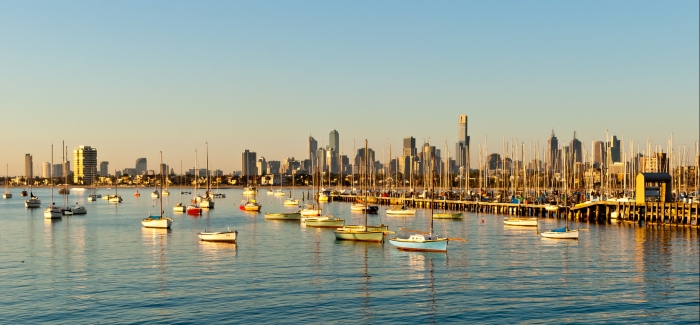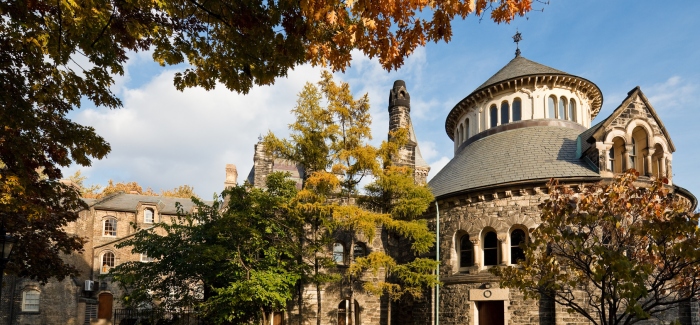If you’re planning to study in Australia (and, let’s face it, why wouldn’t you?), two top universities in Australia loom large as potential study destinations. They are, of course, the Australian National University (ANU) and the University of Melbourne, two of the highest-ranking universities in the country.
Ranked 24th and 39th in the QS World University Rankings® 2019 respectively, both are among the world’s very best universities, so you’re likely to have a fantastic university experience no matter which one you pick. That said, there are key differences between the two that might make the choice of university easier. Here’s what you need to know.
|
|
||
|
QS World University Rankings® 2019 |
Ranked 24th in the world; first in Australia Rated 26th in the world by academics and 66th by employers 319th for faculty/student ratio 44th for citations per faculty member (research impact) 39th for international faculty ratio 33rd for international student ratio |
Joint 39th in the world; second in Australia
548th for faculty/student ratio 76th for citations per faculty
24th for international student ratio |
|
Subject strengths* |
16th in the world for arts & humanities Joint 90th for life sciences & medicine Joint 28th for natural sciences Joint 45th for engineering & technology Joint 14th for social sciences & management |
15th in the world for arts & humanities
Joint 27th for engineering & technology Eighth for social sciences & management |
|
Academic reputation* |
Slightly better-reputed than Melbourne in the fields of arts & humanities and natural sciences. |
Stronger reputation for life sciences & medicine, engineering & technology and social sciences. |
|
Location |
Canberra, Australia’s governmental capital Smaller and calmer Inland, surrounded by mountains, hills and bush |
Melbourne, Australia’s “cultural capital”
On the south coast of Australia, on Port Philip bay |
|
Student community |
23,761 students in 2016 (most recent stats available) 11,633 undergraduates 11,931 postgraduates 7,425 international students (31% of total) |
A total of 50,270 students in 2017
24,387 postgraduates 19,995 international students (39.8% of total) |
|
Fees and funding |
Annual undergraduate fees for domestic students range from A$6,349 to $10,596 (~US$4,700-$7,860) – 2017 figures. Annual international fees range from $34,560 to $46,080 (~US$25,500-$34,000). (2018 figures). |
Annual undergraduate fees for domestic students range from A$6,444 to $10,754 (~US$4,760 -$7,940) – 2018 figures. Annual international undergraduate fees range from A$27,808 to $41,344 (~US$20,500-$30,500) for most subjects – clinical medical degrees cost A$86,720 (~US$64,000). Annual international graduate student fees range from A$33,408 to A$39,520 (~US$24,650-$29,150). |
*Based on the broad subject areas of the QS World University Rankings by Subject 2018.
QS World University Rankings® 2019
Given both universities are comfortably ranked within the top 50 universities in the world, it’s unsurprising both universities enjoy a stellar reputation among academics and employers. In this year’s world rankings, they both score extremely well in QS’s global academic reputation survey, with the University of Melbourne ranking ahead of ANU at 15th in the world, compared to ANU’s 26th place. Melbourne also comes out ahead for employer reputation, ranking 19th in the world, while ANU is further behind in 66th place.
ANU does come out of top in student/faculty ratio, for which it’s ranked 319th, while the University of Melbourne is ranked 548th for this measure. This indicator aims to give an approximate idea of the level of support students may be able to expect, given the number of full-time faculty members employed per student.
ANU also scores better than University of Melbourne for the number of research citations per faculty member, a metric which aims to assess research impact. It’s ranked 44th on this measure, while Melbourne is 76th.
For international diversity, both are strong performers – unsurprising, given Australia’s long history of welcoming students and academics from overseas. Both are within the global top 50 for their percentage of international students: Melbourne 24th and ANU 33rd. For international faculty members, ANU is even stronger – ranked 39th in the world to Melbourne’s 103rd.
In short, it’s a close race all round: ANU and the University of Melbourne lead in three indicators each. However, you may be more influenced by one factor than another (student/faculty ratio or percentage of international students, for example).
Subject strengths
The latest edition of the QS World University Rankings by Subject indicates that ANU is just one place above Melbourne in the broad subject area of arts and humanities, while Melbourne comes out ahead for life sciences, social sciences, and engineering and technology subjects. The two share the position of 28th in the world for natural sciences, and ANU is very close behind Melbourne for social sciences & management, at joint 14th to Melbourne’s eighth.
You can view a direct comparison of how both universities compare for specific disciplines in the table below.
|
Australian National University (ANU) and the University of Melbourne in the QS World University Rankings by Subject 2018 |
||
|
|
ANU |
Melbourne |
|
Accounting & finance |
27th |
=10th |
|
Agriculture & forestry |
Joint 19th |
28th |
|
Anatomy & physiology |
14th |
=8th |
|
Anthropology |
7th |
23rd |
|
Archaeology |
14th |
51-100 |
|
Architecture |
-- |
21st |
|
Art & design |
51-100 |
38th |
|
Biological sciences |
44th |
23rd |
|
Business & management |
49th |
14th |
|
Chemistry |
51-100 |
=33rd |
|
Communication & media studies |
-- |
28th |
|
Computer science & information systems |
=37th |
=14th |
|
Dentistry |
-- |
=24th |
|
Development studies |
9th |
16th |
|
Earth & marine sciences |
9th |
=29th |
|
Economics |
24th |
23rd |
|
Education & training |
40th |
6th |
|
Engineering (chemical) |
-- |
27th |
|
Engineering (civil) |
-- |
26th |
|
Engineering (electrical) |
51-100 |
34th |
|
Engineering (mechanical) |
51-100 |
51-100 |
|
Engineering (mining) |
-- |
13th |
|
English language & literature |
26th |
19th |
|
Environmental sciences |
21st |
=22nd |
|
Geography |
12th |
18th |
|
History |
12th |
31st |
|
Law |
=12th |
8th |
|
Linguistics |
27th |
=24th |
|
Materials science |
51-100 |
-- |
|
Mathematics |
22nd |
36th |
|
Medicine |
51-100 |
17th |
|
Modern languages |
29th |
=32nd |
|
Nursing |
-- |
27th |
|
Performing arts |
34th |
24th |
|
Pharmacy |
-- |
41st |
|
Philosophy |
20th |
101-150 |
|
Physics & astronomy |
44th |
=47th |
|
Politics |
8th |
=31st |
|
Psychology |
44th |
15th |
|
Social policy & administration |
17th |
=18th |
|
Sociology |
13th |
35th |
|
Statistics |
36th |
25th |
|
Theology, divinity & religious studies |
-- |
51-100 |
|
Veterinary science |
-- |
15th |
Location
While there may be little difference between the two top universities in Australia in terms of the high quality of education they provide, there is a lot to distinguish them when it comes to location.
Melbourne
Often referred to as the nation’s cultural capital, Melbourne is an arty city featuring impressive architecture, world-leading museums and an on-the-pulse theatre and comedy scene. The city also offers a myriad of ultra-cool restaurants, clubs and shopping districts, as well as a healthy love of sports.
Coming third in the QS Best Student Cities 2018, Melbourne is a popular study destination due to its large and diverse student community, excellent quality of living and high concentration of world-class universities. Besides the University of Melbourne, the city is home to six more Australian universities which feature in the QS World University Rankings. These are Monash University (joint 59th in the world), RMIT University (joint 250th), Deakin University (309th), Swinburne University of Technology (joint 387th),La Trobe University (joint 397th), and Victoria University (651-700).
Canberra
Home to ANU, Canberra is Australia’s capital city. It’s actually far smaller than Melbourne, both overall and in terms of its student population, which helps to make this city a somewhat calmer place to live. This could be a good or bad thing, depending on your personal preferences.
However, as Australia’s political hub, Canberra couldn’t exactly be described as sleepy. During parliamentary sittings, the city is alive with national politics. While it may be one of the country’s few major settlements further than a stone’s throw from a beach, Canberra boasts a different kind of natural attraction. Surrounded by mountains, hills and bush-land, as much as half of Canberra itself is protected as natural park and reserve land – so if you’re used to living in the countryside, Canberra may be the place where you’d feel more at home.
Aside from ANU, Canberra is also home to the University of Canberra, which is ranked 601-650 in the QS World University Rankings. The city itself is ranked 22nd in the QS Best Student Cities 2018, achieving its highest score for the Student View category.
Student community
The University of Melbourne is over double the size of ANU in terms of student community, with 50,270 students in total, including 19,995 international students. That means internationals account for over a third of the student population, reflected in the university’s high score in the international student ratio category of the rankings. ANU had 23,761 students as of 2016, while statistics show an almost equal divide of undergraduate (11,633) and postgraduate (11,931) students. Of these, 7,425 were international students in 2016, which was 31 percent of the student population at the time.
Tuition fees and living costs
Based on the latest figures for incoming students, ANU and the University of Melbourne both offer the same costs for domestic students, thanks to the nation’s commonwealth support scheme which allows Australian residents to make a smaller contribution to their higher education costs, with the amount dependent on their chosen subject. Arts and humanities subjects (band 1) are typically the cheaper programs, while medical-related subjects, business and law programs (band 3) tend to be the most expensive.
International student fees are towards the upper end of the international spectrum, with annual tuition costs of around A$27,808 - $46,080 (~US$20,500-34,000) at both schools. Medicine is the most expensive subject for international students, with annual tuition fees of A$86,720 (~US$64,000) for clinical medicine at the University of Melbourne.
Scholarships and funding
With such high tuition fees, prospective students will be pleased to learn that both the University of Melbourne and Australian National University offer scholarships for international students, with both offering online search tools to enable students to identify scholarships relevant to their particular situation.
There are also a number of government scholarships available to study in Australia, including the Australia Awards, aimed at students at all study levels from developing countries, and the Endeavour Postgraduate Scholarships. You can find more scholarships to study in Australia here.
This article was originally published in November 2014. It was last updated in June 2018.
Want more content like this? Register for free site membership to get regular updates and your own personal content feed.














